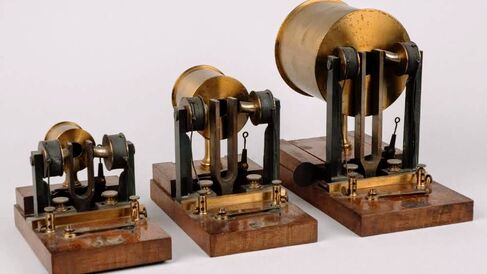Historical Notes: a Brief Chronicle of the Tuning Fork

The tuning fork has functioned both as a musical instrument and as a precision scientific instrument. Interactions between musicians and scientists using tuning forks have helped to shape modern music and science. Hence the tuning fork is of central importance for those interested in the history of the science of musical sound.
Invention
The tuning fork was invented in 1711 by John Shore (d. 1752), the renowned musician, instrument maker and trumpeter to the English Royal Court and favorite of George Frideric Handel (1685-1759). Before this innovation musicians requiring a standard musical pitch had to rely on wooden pitch pipes, which were rather unreliable being much affected by changes in temperature and humidity. The tuning fork, in contrast, holds its pitch across a wide range of environmental conditions and in addition produces a very pure tone.
Musical significance
The tuning fork has played a vital role in defining at least two aspects of modern music. First, it was instrumental in the quest to establish national and eventually international standards for concert pitch (the familiar A=440Hz). Second, the tuning fork was central to the attainment and popularization of the now universal equal temperamentkeyboard tuning system - a defining feature of contemporary Western music. The tuning fork has also formed the central sound-producing function in several musical instruments such as in the modern Fender-Rhodes electric piano.
Scientific history
Although invented for musical purposes in the early 18th century the tuning fork did not fulfill its true potential until the latter half of the 19th century, by which time it had become a precision scientific instrument of some importance. The musical issues mentioned above could not have been addressed by musicians working on their own; they also required a detailed scientific understanding of the relationship between frequency and perceived pitch and of the physical properties of vibrating rods and plates, and the rise of scientifically accomplished technicians and instrument makers. Many of the key figures in this history were accomplished musicians as well as scientists.
The tuning fork continues to be of musical utility, but since the development of electrical technologies in the early 20th century it has fallen out of use in science. One exception is in medicine where tuning forks are still used in the diagnosis of hearing disorders.
Key historical figures in tuning fork history
Ernst Chladni (1756-1827)
Ernst Chladni, often refered to as 'the father of experimental acoustics', was the first scientist to systematically investigate tuning forks, using his famous powder method to reveal the patterns of vibration on vibrating objects. Chladni's work on vibrating plates, rods and tuning forks was driven and informed by his passions for music and musical instrument design.
Johann Scheibler (1777-1837)
Johann Scheibler was a wealthy industrialist specializing in textile manufacture, but he also had strong amateur interests in science and music. Amazingly he found time during the 1830s to prove that the average concert A of Viennese concert pianos was 440Hz and also to develop a method for tuning pianos in equal temperament with unprecedented accuracy. In both endeavors he deployed his invention, the tuning fork tonometer, which comprised 56 precision engineered tuning forks. In 1834 the German academy of sciences endorsed Scheibler's pitch (the so-called Stuttgart pitch) as the German national standard, but it took until 1926 for this standard to become global.
Jules Antoine Lissajous (1822-1880)
The middle of the 19th century witnessed an international race towards scientific and technical standardization. In France, after receiving news of Scheibler's achievement, the government set up a commission to establish a French standard pitch. This group of experts included the scientist Jules Lissajous (1822-1880) who, with the committee's approval, created a standard tuning fork at 335Hz. In the process he invented an optical method for calibrating tuning forks using so-called Lissajous figures (see photo), which proved to be of great utility in many other fields (such as in the calibration of television transmission in the 20th century).
Herman von Helmholtz (1821-1894)
Herman von Helmholtz was one of the finest scientists of the 19th century and his decisive contribution to the science of sound was but a fraction of his entire output. Amongst his many other achievements in acoustics Helmholtz performed some ingenious experiments using tuning fork-based instruments. Most notably he invented the world's first sound synthesizer in a bid to demonstrate his theory about the complex nature of speech and musical sounds.
Rudolph Koenig (1832-1901)
The Parisian scientific instrument maker Rudolph Koenig did a great deal to bring experimental acoustics into the mainstream of physics. Originally he trained as a violin maker under Jean Baptise Vuillaume (1798-1875), but later devoted his life to building instruments for the study of acoustics. He perfected the tuning fork and built instruments designed by Helmholtz and others, as well as inventing his own. The Whipple Museum has a number of instruments built by Koenig.
Torben Rees
Torben Rees, 'Historical notes: a brief chronicle of the tuning fork', Explore Whipple Collections, Whipple Museum of the History of Science, University of Cambridge, 2009.
